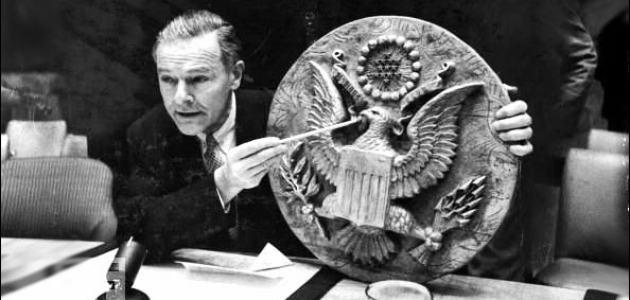
Listening device that causes deafness is unheard of, expert says
An American expert on intelligence (i.e. espionage) confesses that he is baffled by the allegations from Washington that a Cuban security agency used some secret device to damage the hearing of U.S. diplomats in Havana last year.
U.S. ousts two Cuban diplomats citing mysterious 2016 ‘incident’
The Cuban government denied the allegations in a formal statement, but the U.S. State Department insisted last Friday (Aug. 11), when Secretary of State Rex Tillerson spoke to the press.
Cuba reacts to expulsions and accusations: Statement by Ministry of Foreign Affairs
“We hold the Cuban authorities responsible for finding out who is carrying out these health attacks on not just our diplomats but, as you’ve seen now, there are other cases with other diplomats involved,” Tillerson said. The Canadian embassy said that one of their diplomats in Havana had been treated for hearing loss.
H. Keith Melton, an intelligence historian and author of the book “CIA Special Weapons and Equipment,” told The Cipher Brief last week that the Soviet Union (now the Russian Federation) had been using eavesdropping devices against the United States since the 1940s. Cuba is a close ally of the Russian government and presumably shares in its technology.
The Cipher Brief is a website that specializes in intelligence gathering techniques.
https://www.thecipherbrief.com/article/exclusive/sonic-weapons-cuba-cutting-edge
However, Melton wonders if an electronic device used for eavesdropping is capable of damaging a person’s body.
“Is there such a weapon?” he asks. “The body can be very fragile, especially to sounds outside of the envelope that we use as our normal hearing. There are two types of sound: ultra-sonic, which is above our normal hearing, and infra-sonic, which is beneath it.
“Low frequency or infra-sonic signals have been known to make people lethargic. High frequency signals can have a totally different set of effects. But I have never read any medical report about something that would make people lose their hearing.”
The U.S. Army has used sound weapons in the past, Melton adds, devices that create “such a high-decibel sound that it is painful in your ears. Most recently we saw them deployed in the Middle East against pirates attacking commercial tankers — rather than shoot at them, they used these sound weapons to drive the boats off. [The sound] is very audible and itís very channeled: to get you to move out of the way. But youíre actually hearing it.”
When asked if a device would cause loss of hearing without being audible, Melton waffled.

“Anything is possible,” he answered. “The question is: is it probable? I havenít seen any medical evidence that would give a reason to believe that something like that is possible. It would be on the cutting edge.”
A well-remembered example of electronic surveillance occurred in 1960, when Henry Cabot Lodge, U.S. delegate to the United Nations, displayed a carved wooden replica of the Great Seal of the United States that the Soviets had presented as a gift in 1952 and had hung in the U.S. Embassy in Moscow for six years.
The plaque was described as a listening device, with a hollow inside chamber that produced resonance and permitted the Soviets to overhear conversations in the room by bouncing radio waves off it from a nearby building.
However, the radio waves beamed into the embassy were not strong enough to damage the diplomats’ hearing, and, as appraised by expert Melton, their use in this case is unlikely.
[Photo at top: Henry Cabot Lodge, U.S. delegate to the United Nations, displaying to the Security Council in 1960 a listening device concealed in the U.S. Embassy in Moscow.]

